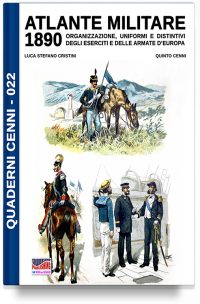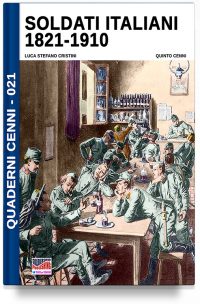-

Char B1, B1 bis, B1 Ter e varianti (PDF)
- €15,00
- Lo Char B1 era un pesante carro armato da combattimento francese, progettato tra le due guerre e utilizzato all’inizio della Seconda Guerra Mondiale, probabilmente il più famoso e noto in uso in quel fatale maggio del 1940. La sua progettazione iniziò negli anni ‘20 con diversi prototipi, finché venne scelto il modello Renault nel 1929, ma la produzione in serie fu avviata solo nel 1934. Vennero prodotti 35 esemplari nel primo modello, il carro B1 (del 1935) e 365 esemplari…
-

Char B1, B1 bis, B1 Ter & other variants (PDF)
- €15,00
- The Char B1 was a French heavy combat tank designed between the wars and used at the beginning of World War II. probably the most famous and well-known in use in that fateful May of 1940. Its design began in the 1920s, with several prototypes, until the Renault model was chosen in 1929, but mass production did not begin until 1934. Thirty-five examples were produced in the first model, the B1 tank (of 1935) and 365 examples in the B1-bis…
-
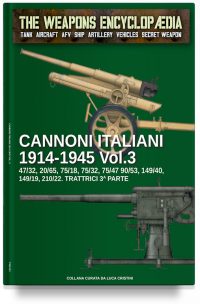
Cannoni italiani 1914-1945 – Vol. 3 (PDF)
- €15,00
- Dopo i primi due volumi sui cannoni italiani, dedicati allo studio e l’analisi dei pezzi d’artiglieria ereditati dal primo conflitto mondiale, sia di produzione nazionale che fonti di preda bellica (tipicamente austro-ungarica) a seguito della vittoria nel 1915-18; in questa terza e ultima parte tratteremo e completeremo il nostro lavoro sulle artiglierie italiane dei primi cinquanta anni del Novecento, trattando prevalentemente i mezzi di concezione più moderna, ideati dalla seconda metà degli anni ‘30. Il criterio usato sarà ancora quello…
-
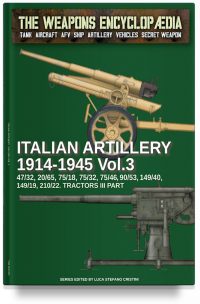
Italian Artillery 1914-1945 – Vol. 3 (PDF)
- €15,00
- After the first two volumes on Italian artillery, devoted to the study and analysis of artillery pieces inherited from the First World War, both domestically produced and sources of wartime prey (typically Austro-Hungarian) following the victory in 1915-18; in this third and final part we will treat and complete our work on Italian artilleries of the first fifty years of the twentieth century, dealing mainly with the more modernly designed pieces conceived from the second half of the 1930s. The…
-
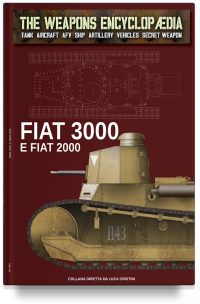
FIAT 3000 e FIAT 2000 (PDF)
- €15,00
- Il FIAT 3000 è stato un veicolo importante nell’armamento dell’Esercito Italiano, entrato in servizio dopo la Prima Guerra Mondiale. Prodotto in due versioni, il Modello 1921 e il Modello 1930, questo carro armato leggero è stato essenziale per le unità corazzate italiane fino agli anni ‘30. Originariamente basato sul Renault FT francese, presentava notevoli miglioramenti, come un motore più potente e una disposizione interna ottimizzata. Il FIAT 3000 rappresenta un capitolo importante nella storia dell’esercito italiano, in quanto è stato…
-
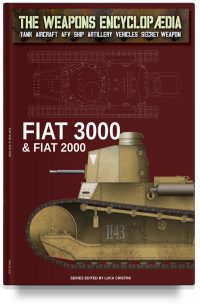
FIAT 3000 & FIAT 2000 (PDF)
- €15,00
- The FIAT 3000 was an important vehicle in the armament of the Italian Army, entering service after World War I. Produced in two versions, the Model 1921 and Model 1930, this light tank was essential to Italian armored units until the 1930s. Originally based on the French Renault FT, it featured significant improvements, such as a more powerful engine and an optimized internal layout. The FIAT 3000 represents an important chapter in the history of the Italian army, as it…
-
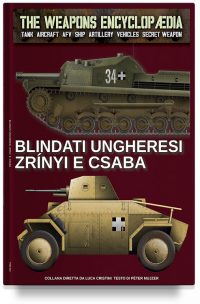
Blindati ungheresi Zrínyi e Csaba (PDF)
- €15,00
- L’esercito ungherese si impegnò seriamente per approntare le sue forze corazzate/meccanizzate durante la Seconda Guerra Mondiale. Tuttavia, si trattava di un compito difficile. L’Ungheria era sottoposta alle restrizioni militari del Trattato di Pace di Versailles; il Paese e l’industria degli armamenti erano in pessime condizioni finanziarie all’inizio degli anni ‘30. L’Ungheria acquistò i carri armati italiani CV35 a metà degli anni ‘30 e la produzione su licenza del carro armato leggero svedese L-60 iniziò nel 1940. La guerra in corso…
-
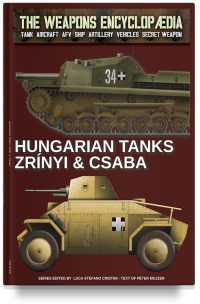
Hungarian 39/40 M. Csaba & 40/43 M. Zrínyi (PDF)
- €15,00
- The Hungarian Army made serious efforts to build its armoured/mechanized force during WW2. However, it was a difficult task. Hungary was under the military restrictions of the Peace Treaty; the country and the armament industry were in a poor financial state in the early 30s. The Hungarian purchased the Italian CV35 tankettes in the mid-30s, and the license production of the Swedish L-60 light tank started in 1940. The ongoing war proved the necessity of the medium, heavy tanks assault…
-
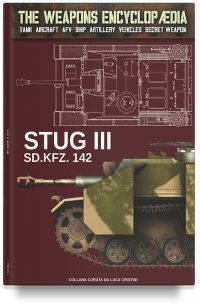
Stug III Sd.Kfz. 142 (PDF)
- €15,00
- Lo Sturmgeschütz III Sd.Kfz. 142, denominazione quasi sempre abbreviata in StuG III, fu un formidabile cannone d’assalto in dotazione all’esercito tedesco durante la Seconda guerra mondiale, ricavato dallo scafo del carro armato medio Panzer III del quale mutuò per intero il treno di rotolamento, cingoli ecc. L’installazione dell’armamento principale era predisposta in casamatta rigida anziché in una torretta girevole. Questo fatto, ovviamente, riduceva le capacità del mezzo, in quanto si trattava di artiglieria semovente (ma sempre più spesso venne usato…
-
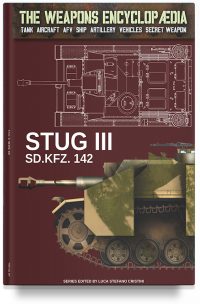
Stug III Sd.Kfz. 142 (PDF)
- €15,00
- The Sturmgeschütz III, Sd.Kfz. 142 almost always named shortened to StuG III, was a formidable assault gun supplied to the German Army during World War II, made from the hull of the Panzer III medium tank whose it borrowed entire rolling train, tracks, etc. The installation of the main armament was arranged in rigid casemate instead of a revolving turret. This fact, obviously, reduced the capabilities of the vehicle, as it was a self-propelled gunner (but increasingly it was also…
-
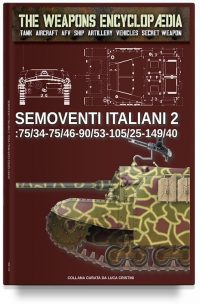
Semoventi italiani – Vol. 2: 75/34-75/46-90/53-102/25-149/40 (PDF)
- €15,00
- In questo secondo volume, completiamo la storia della dotazione dei mezzi semoventi in forza all’esercito italiano, sia quello del Regno che quello della Repubblica Sociale Italiana dopo il 1943! Dopo il grande successo del 75/18 presentato nel primo volume, ci occupiamo quindi dei fratelli maggiori, vale a dire del mezzo 75/34 già in parte presente nel primo volume, della sua variante, il 75/46, del famoso Bassotto, ovvero il semovente 105/25, forse il mezzo più potente dell’arsenale italiano, per concludere con…
-

Italian Semoventi – Vol. 2: 75/34-75/46-90/53-102/25-149/40 (PDF)
- €15,00
- In this second volume, we complete the history of self-propelled vehicles in force in the Italian army, both that of the Kingdom and that of the Italian Social Republic after 1943! After the great success of the 75/18 presented in the first volume, we then deal with its older brothers, namely the 75/34 already partly present in the first volume, its variant, the 75/46. Next, the famous “Bassotto” i.e., the self-propelled 105/25, perhaps the most powerful vehicle in the Italian…
-
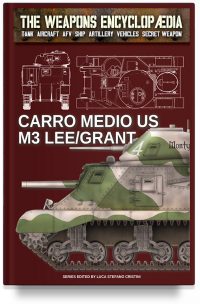
Carro Medio US M3 Lee/Grant (PDF)
- €15,00
- Ufficialmente designato come Medium Tank, M3, fu il primo carro armato medio statunitense ad essere fabbricato in grande serie. Venne ideato e progettato intorno al 1940 e divenne operativo nel 1941. La sua torretta venne realizzata in due varianti, una conformemente alle specifiche degli Stati Uniti e l’altra modificata per soddisfare i requisiti britannici, includendo in questo caso, la collocazione della radio accanto al comandante. Nel contesto del Commonwealth britannico, il carro armato acquisì due denominazioni distinte: quelli con torrette…
-
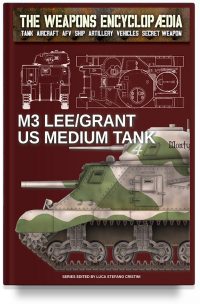
M3 Lee/Grant US Medium Tank (PDF)
- €15,00
- Officially designated as the Medium Tank, M3 was the first US medium tank to be mass-produced. It was conceived and designed around 1940 and became operational in 1941. Its turret was made in two variants, one according to US specifications and the other modified to meet British requirements, in this case including the placement of the radio next to the commander. In the context of the British Commonwealth, the tank acquired two distinct designations: those with US-model turrets were called…
-
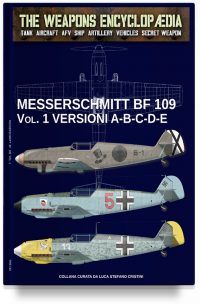
Messerschmitt BF 109 – Vol. 1: versioni A-B-C-D-E (PDF)
- €15,00
- Il Messerschmitt BF 109, moto anche come ME 109, fu forse il più famoso aereo da caccia della Luftwaffe. Sviluppato durante la prima metà degli anni '30 da Wilhelm Messerschmitt e Robert Lusser. Questo fantastico aereo da caccia si caratterizzava per la sua struttura monoscocca completamente in metallo, una cabina chiusa, un carrello d'atterraggio fisso e un motore aeronautico a forma di V con 12 cilindri invertiti, raffreddati ad acqua. I primi esemplari del Bf 109 fecero la loro comparsa…
-
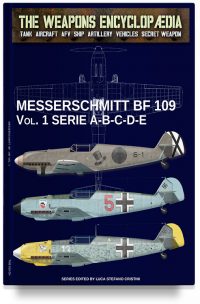
Messerschmitt BF 109 – Vol. 1: series A-B-C-D-E (PDF)
- €15,00
- The Messerschmitt BF 109, also known as the ME 109, was perhaps the most famous fighter aircraft of the Luftwaffe. Developed during the first half of the 1930s by Wilhelm Messerschmitt and Robert Lusser. This fantastic fighter aircraft was characterised by its all-metal monocoque structure, an enclosed cabin, a fixed landing gear and a V-shaped aircraft engine with 12 inverted, water-cooled cylinders. The first examples of the Bf 109 appeared during the Spanish Civil War and remained in service until…
-
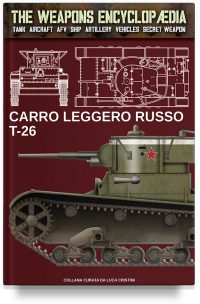
Carro leggero russo T-26 (PDF)
- €15,00
- Il T-26 russo fu un carro armato leggero, pensato da supporto alla fanteria, prodotto in Unione Sovietica a partire dal 1931. Esso non nacque come un progetto autonomo, ma derivò principalmente dal mezzo britannico Vickers 6-ton o Vickers Type E. I carri armati T-26 erano armati di due torrette parallele al centro dello scafo, e dotate di una mitragliatrice leggera ciascuna. Il passo successivo fu quello di installare, su una torretta, un cannone da 27 mm o da 37 mm.…
-
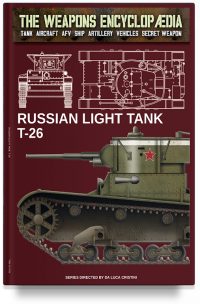
Russian light tank T-26 (PDF)
- €15,00
- The Russian T-26 was a light tank, designed for infantry support, produced in the Soviet Union from 1931. It did not originate as an autonomous design, but was mainly derived from the British Vickers 6-ton or Vickers Type E vehicle. The T-26 tanks were armed with two parallel turrets in the centre of the hull, each equipped with a light machine gun. The next step was to install a 27-mm or 37-mm cannon on one turret. This was replaced by…
-
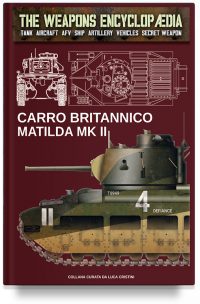
Carro britannico Matilda MK II (PDF)
- €15,00
- Il carro armato Matilda Mk II, fu un carro armato di fanteria utilizzato dall’Esercito Britannico durante la Seconda Guerra Mondiale. Questo carro era famoso per la sua pesante corazza e la sua capacità di resistere agli attacchi nemici, soprattutto nelle fasi iniziali del conflitto. La sua corazza, infatti, lo rendeva praticamente invulnerabile ai cannoni anticarro dell’epoca. Per contro la sua velocità e la sua capacità di fuoco erano limitate rispetto ai carri avversari. Era armato di un cannone principale da…
-
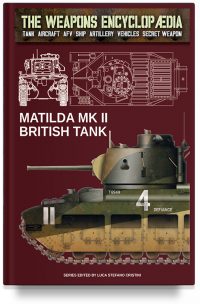
Matilda MK II British Tank (PDF)
- €15,00
- The Matilda Mk II tank, was an infantry tank used by the British Army during the Second World War. This tank was famous for its heavy armour and its ability to resist enemy attacks, especially in the early stages of the conflict. In fact, its armour made it virtually invulnerable to the anti-tank guns of the time. On the other hand, its speed and firepower were limited compared to the enemy tanks. It was armed with a 2-pound (40 mm)…
-
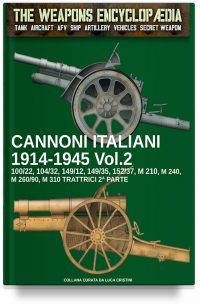
Cannoni italiani 1914-1945 – Vol. 2 (PDF)
- €15,00
- Dopo il primo volume sui cannoni italiani, in questa seconda parte tratteremo e completeremo lo studio e l’analisi dei pezzi d’artiglieria ereditati dal primo conflitto mondiale, sia di produzione nazionale che fonti di preda bellica (tipicamente austro-ungarica) a seguito della vittoria nel 1915-18. Il criterio usato sarà ancora quello già utilizzato del calibro a crescere, quindi dai pezzi leggeri in poi. Con il terzo volume che completerà il nostro lavoro sulle artiglierie italiane dei primi cinquanta anni del Novecento tratteremo prevalentemente…
-
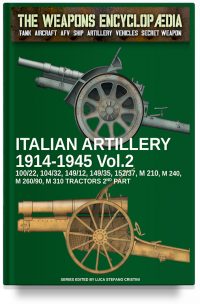
Italian Artillery 1914-1945 – Vol. 2 (PDF)
- €15,00
- After the first volume on Italian cannons, in this second part we will treat and complete the study and analysis of the artillery pieces inherited from the First World War, both of national production and sources of war prey (typically Austro-Hungarian) following the victory in 1915-18. The criterion used will still be that of the growing calibre, i.e. from light pieces onwards. With the third volume, which will complete our work on Italian artillery from the first fifty years of…
-
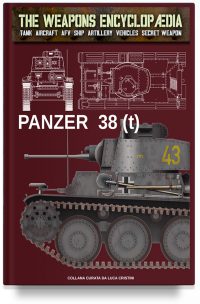
Panzer 38(t) (PDF)
- €15,00
- Il Panzerkampfwagen 38(t) non nasce tedesco. Il suo nome originale era LT vz. 38, ed era il miglior carro armato cecoslovacco realizzato tra le due guerre. Ebbe però fortuna e sostanziale utilizzo solo in un altro esercito, quello tedesco che ribattezzò il mezzo Pz.Kpfw.38(t). Nella Wehrmacht, questo carro armato divenne uno dei simboli della Blitzkrieg, combattendo nell’avanguardia delle unità corazzate tedesche. Fu quindi così che nella primavera del 1940, i carri armati costruiti a Praga distrussero i veicoli britannici e…
-
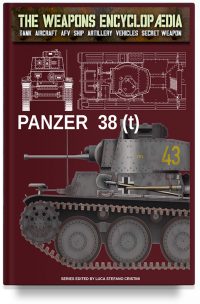
Panzer 38(t) (PDF)
- €15,00
- The Panzerkampfwagen 38(t) was not born German. Its original name was LT vz. 38, and was the best Czechoslovak tank made between the wars. However, it only had luck and substantial use in another army, the German army, which renamed the vehicle Pz.Kpfw.38(t). In the Wehrmacht, this tank became one of the symbols of the Blitzkrieg, fighting in the vanguard of the German armoured units. Thus it was that in the spring of 1940, the Prague-built tanks destroyed the British…
-
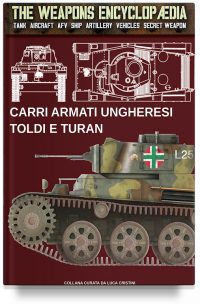
Carri armati ungheresi Toldi e Turan (PDF)
- €15,00
- Durante la Seconda guerra mondiale, l’Ungheria schierò diverse unità di carri armati per supportare gli sforzi bellici dell’Asse. L’esercito ungherese utilizzò principalmente due tipi di carri armati durante il conflitto: il Toldi e il Turán in diverse varianti. Il Toldi era un carro armato leggero ungherese, sviluppato negli anni ‘30. Si trattava di un carro agile e adatto per compiti di ricognizione e supporto delle truppe. Il Turán fu il primo carro armato ungherese prodotto in serie. Era basato sul…
